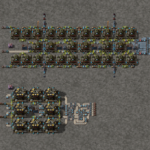Discover The Future: Space Exploration With Green Circuits – Click To Explore!
Exploring the Depths of Space with Green Circuits
Space exploration has always been a fascinating subject, captivating the minds of people across the globe. The endless possibilities and mysteries that lie within the vast expanse of the universe have led scientists and researchers to develop innovative technologies to aid in their quest for knowledge. One such technology that has revolutionized space exploration is green circuits.
What are Green Circuits?
Green circuits, also known as environmentally friendly circuits, are electronic components designed with the goal of minimizing their impact on the environment. These circuits are made using sustainable materials and manufacturing processes, ensuring that they are both energy-efficient and eco-friendly.
2 Picture Gallery: Discover The Future: Space Exploration With Green Circuits – Click To Explore!
Who Uses Green Circuits in Space Exploration?
In the realm of space exploration, green circuits are utilized by space agencies such as NASA, private companies, and research institutions. These organizations understand the importance of reducing the carbon footprint of their missions and strive to incorporate sustainable technologies into their spacecraft and equipment.
When and Where are Green Circuits Used in Space Exploration?

Image Source: redd.it
Green circuits are used in various applications throughout the entire process of space exploration. They can be found in spacecraft, satellites, rovers, and scientific instruments, playing a crucial role in collecting and transmitting data back to Earth.
Why are Green Circuits Essential for Space Exploration?
The use of green circuits in space exploration offers several advantages. Firstly, their energy-efficient design helps in conserving power, enabling longer missions and reducing the need for frequent replacements. Additionally, their eco-friendly nature ensures that space missions have a minimal impact on the environment, aligning with the principles of sustainability.
How are Green Circuits Different from Traditional Circuits?
Green circuits differ from traditional circuits in their composition and manufacturing processes. While traditional circuits may contain hazardous substances and are manufactured using non-renewable resources, green circuits are made using environmentally friendly materials, such as lead-free solder and recyclable components. These circuits also undergo rigorous testing to ensure their reliability and performance in space.
Frequently Asked Questions about Space Exploration Green Circuits
What types of green circuits are available for space exploration?

Image Source: redd.it
There are various types of green circuits used in space exploration, including printed circuit boards (PCBs), integrated circuits (ICs), and solar panels. Each type serves a specific purpose and contributes to the overall efficiency and sustainability of space missions.
What size are green circuits used in space exploration?
The size of green circuits used in space exploration varies depending on the specific application. They can range from small, intricate components to larger, complex circuit boards used in spacecraft and satellites.
What materials are green circuits made of?
Green circuits are manufactured using environmentally friendly materials, such as biodegradable polymers, recyclable metals, and lead-free solder. These materials not only reduce the environmental impact but also ensure the longevity and reliability of the circuits in the harsh conditions of space.
What are the specifications and requirements for green circuits in space exploration?
Green circuits used in space exploration must meet stringent specifications and requirements to withstand the extreme temperatures, radiation, and vacuum of outer space. They need to be resistant to thermal cycling, have low outgassing properties, and maintain their functionality in the absence of gravity.
What are some tips and tricks for using green circuits in space exploration?
When using green circuits in space exploration, it is essential to consider their power consumption and optimize their energy usage. Proper thermal management is also crucial to prevent overheating and ensure the longevity of the circuits. Additionally, regular maintenance and testing of the circuits are necessary to detect any potential issues and ensure their continuous operation.
The Benefits and Disadvantages of Space Exploration Green Circuits
Benefits of Green Circuits in Space Exploration
– Energy-efficient design allows for longer missions and reduced power consumption.
– Eco-friendly materials minimize the environmental impact of space missions.
– Reliability and performance in the extreme conditions of space.
– Contributes to the sustainability and future of space exploration.
Disadvantages of Green Circuits in Space Exploration
– Higher initial costs compared to traditional circuits.
– Limited availability of certain green circuit components.
– Rigorous testing and verification processes to ensure spaceworthiness.
– Requires specialized knowledge and expertise for design and implementation.
Conclusion
Space exploration green circuits have emerged as a remarkable innovation in the field of space exploration. Their energy-efficient and environmentally friendly design provide numerous benefits, enabling longer missions and reducing our impact on the universe. While there may be some challenges associated with their implementation, the advantages they offer outweigh the disadvantages. As we continue to delve deeper into the mysteries of space, green circuits will undoubtedly play a pivotal role in shaping the future of exploration beyond our planet.
This post topic: Constellation Guides

